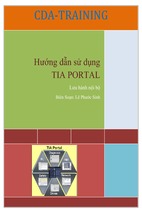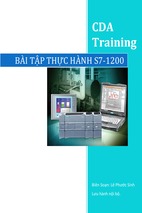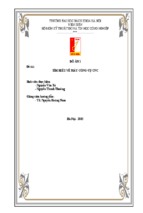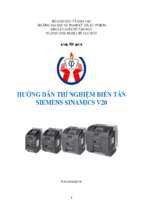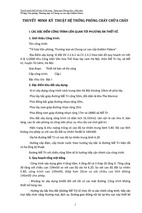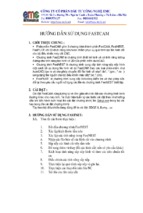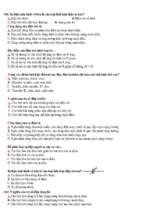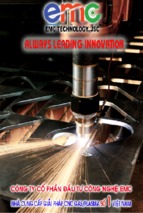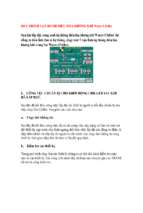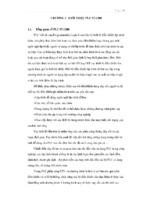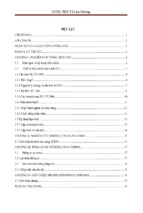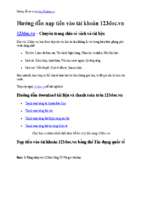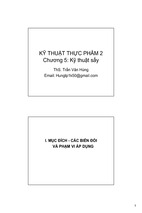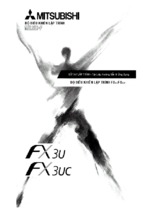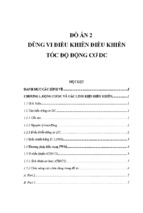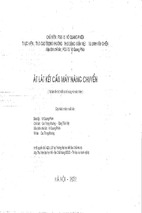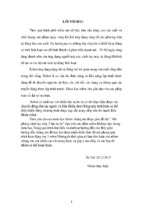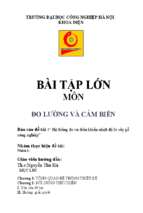Mô tả:
ADVANCED MANUFACTURING
ENGINEERING
5: Metal Forming Processes 1
December 2016
2
Manufacturing technology
3
Forming Processes
• The most common forms of metal working (Forming) are
• Forging
• Rolling
• Extrusion
• Deep drawing
• Wire drawing
• Working can be carried out either at ambient temperature
(cold working) or at some higher temperature.
4
Bulk Deformation
• Metal forming operations which cause significant shape
change by deforming metal parts whose initial form is bulk
rather than sheet
• Starting forms:
• Cylindrical bars and billets
• Rectangular billets and slabs and similar shapes
• These processes stress metal sufficiently to cause plastic
flow into the desired shape
• Performed as cold, warm, and hot working operations
5
Importance of Bulk Deformation
• In hot working, significant shape change can be
accomplished
• In cold working, strength is increased during shape
change
• Little or no waste - some operations are near net shape or
net shape processes
• The parts require little or no subsequent machining
6
Bulk Deformation Processes
7
Forging
• Forging is controlled, plastic deformation or working of
metals into predetermined shapes by means of pressure
or impact or a combination of both.
• Forgings can offer decisive cost advantages, especially in
high-volume production runs.
• Forging improves the quality of
the metal (improves strength
and toughness), refines the
grain structure and increases
strength and toughness.
8
Forging
• Forging process is where workpiece is shaped by
compressive forces applied through dies and tooling
• Forging operations produce discrete parts
• Forged parts have good strength and toughness, and are
reliable for highly stressed and critical applications
• Forging can carry out at room temperature (cold forging)
or at elevated temperatures (warm or hot forging)
depending on the homologous temperature
9
Forging
• Forged parts are generally near-net shapes, making better use of
material, generating little scrap, and requiring less machining
and labour time.
• Forging is used for the production of highly stressed
components such as crankshafts for car engines.
• Forging can be used to manufacture parts from a wide range of
metals.
10
Introduction
• (a) Illustration of the steps involved in forging a knife. (b) Landing-gear
components for the CSA and CSB transport aircraft, made by forging. (c)
General view of a 50,000-ton hydraulic press.
11
Open-die forging
• Open-die forging is the simplest forging operation
12
Open-die forging
• Open-die forging is where a solid workpiece is placed
between two flat dies and reduced in height by
compressing it
• Also called upsetting or flat die forging
• Workpiece is deformed uniformly under frictionless
conditions
13
Open-die forging
• Open die forging (above 1250oC for steels)
• This method is a very cost-effective method for making small quantities
of moderately sized components.
• Limited to simple shapes.
• Low production rate.
• High degree of skill required.
https://www.youtube.com/watch?v=kiLoh7V-vtY
Open die forging
14
Grain Flow
15
Die Pressure
Forging force
• The forging force, F, in an open-die forging operation on a
solid cylindrical workpiece can be estimated from the
formula:
• where Yf is the flow stress of the material m is the
coefficient of friction between the workpiece and the die,
and r and h are, respectively, the instantaneous radius
and height of the workpiece.
Example
• A solid cylindrical slug made of 304 stainless steel is 150
mm in diameter and 100 mm high. It is reduced in height
by 50% at room temperature by open-die forging with flat
dies. Assuming that the coefficient of friction is 0.2 and the
flow stress of the material is 1000 MPa. Calculate the
forging force at the end of the stroke.
19
Forging processes
• Closed die forging
• A pair of mating steel dies are used; when brought
together, these form an enclosed cavity that
corresponds to the shape of the required forged
component.
• Suitable for large number of identical components.
• Better dimensional accuracy than hammer forging.
• Higher production rate than hammer forging.
• High die cost for small quantities.
20
Types of Forging
Forging Force
• Where kp is a multiplying factor obtained from Table, Yf is
the flow stress of the material at the forging temperature,
and A is the projected area of the forging.
- Xem thêm -

